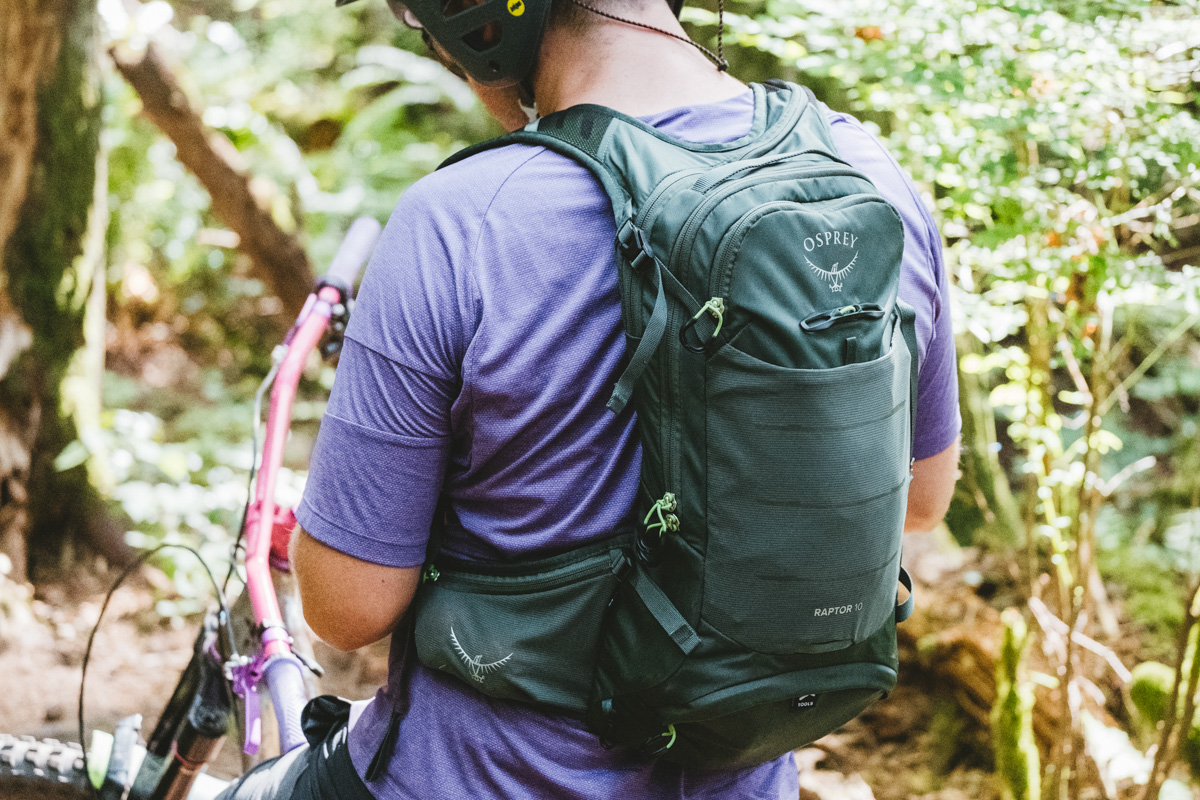

Price: $170
Capacities: 10, 14L
Reservoir included: Yes (2.5L)
What we like: A comfortable, breathable, and full-featured backpack for full days on the mountain.
What we don’t: Stretchy mesh exterior fabric prone to damage.
See the Men's Osprey Raptor 10 See the Women's Osprey Raven 10
There’s a reason you see Osprey’s Raptor 10 bike hydration pack more often than any other pack at the trailhead: It manages to strike the tough balance of comfort, capacity, and features that most dedicated mountain bikers look for in a pack. After testing the latest version of the Raptor 10 on multiple day rides at Galbraith Mountain near Bellingham, Washington, I came away impressed with how well this pack adapted to a variety of trails and load capacities. Osprey’s attention to detail is really what makes this pack stand out—with the inclusion of a 2.5-liter water reservoir, detachable tool roll, flexible and breathable mesh backpanel, and well-sorted storage, the Raptor 10 has everything you need for long day rides. While I have a few concerns with the long-term durability of the stretchy mesh on the exterior of the pack, my gripes are few and far between. Below, I detail my experiences with the Osprey Raptor 10 bike backpack. For a wider view of the market, check out our article on the best mountain bike backpacks.
One of the defining features of the Osprey Raptor 10 is its comfort. The foam framesheet is flexible and soft, which allowed the backpack to move with my body as I rode. The mesh-covered backpanel and hipbelt distribute weight evenly and don’t cause any rubbing or bruising, even on all-day rides. Similarly, the winged shoulder harness didn’t cause any pinching or soreness on my shoulders or underarms. And while packs with suspended backpanels generally offer greater airflow, I found the close-to-back carry on the Raptor 10 ideal for maintaining balance on intense rides. The svelte suspension adapted easily to each trail, despite the environment and the load it was carrying.
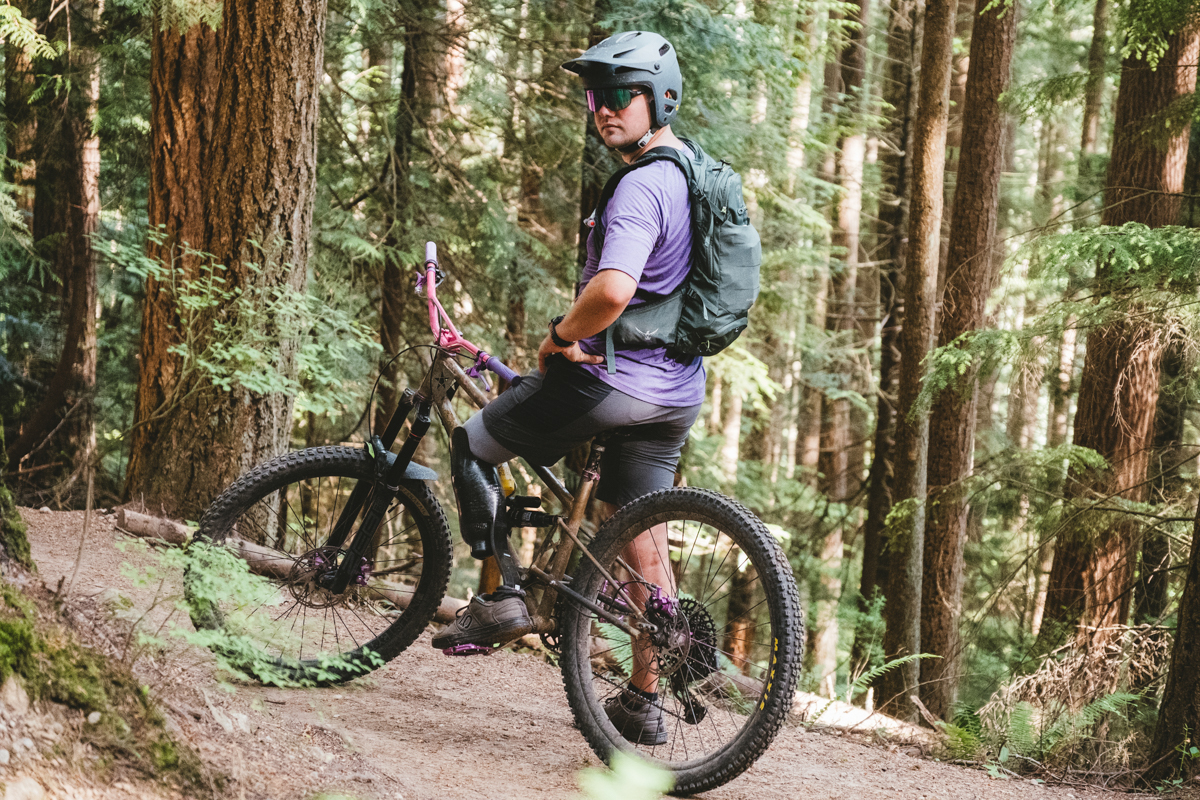
As mentioned, the Raptor 10’s backpanel sits directly against the back—there is no suspended mesh backpanel to promote airflow. Despite this, the pack proved to be just as breathable as other packs I've tested—oftentimes even more breathable. Osprey’s Airscape backpanel features a thin and comfortable mesh as well as rigid foam cushioning that allows air to move between the pack and my back. The hipbelt and shoulder straps are outfitted with a similar mesh, which prevented me from sweating through my t-shirt.
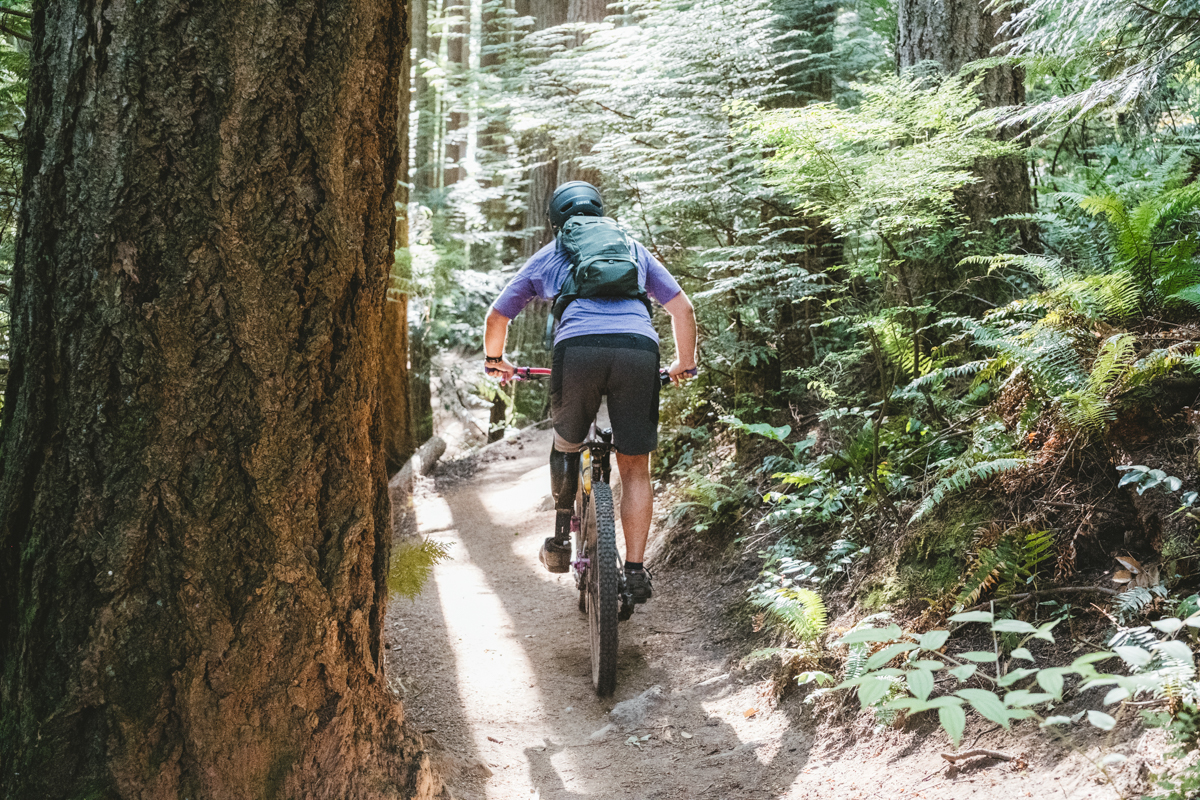
Storage: Pockets and Organization
The Raptor 10 features a nice assortment of pockets to organize everything I normally carry for a day ride. On the outside, the Raptor has a stretch mesh pocket that’s ideal for quickly storing a windbreaker or rain jacket, two stretchy mesh hipbelt pockets carry on-the-go snacks, and a lined pocket along the top works great for storing sunglasses. The main compartment has a few other small pockets inside, including a hydration sleeve, a zippered pocket with a key clip, bike tool organization, a hydration sleeve with direct zip access, and a hose path for easy loading. I only have one small gripe with the organization of this pack: The exterior mesh stretch pocket collected dirt, pine needles, and other forest debris throughout the day, though it wasn't too much of a task to clean it out.
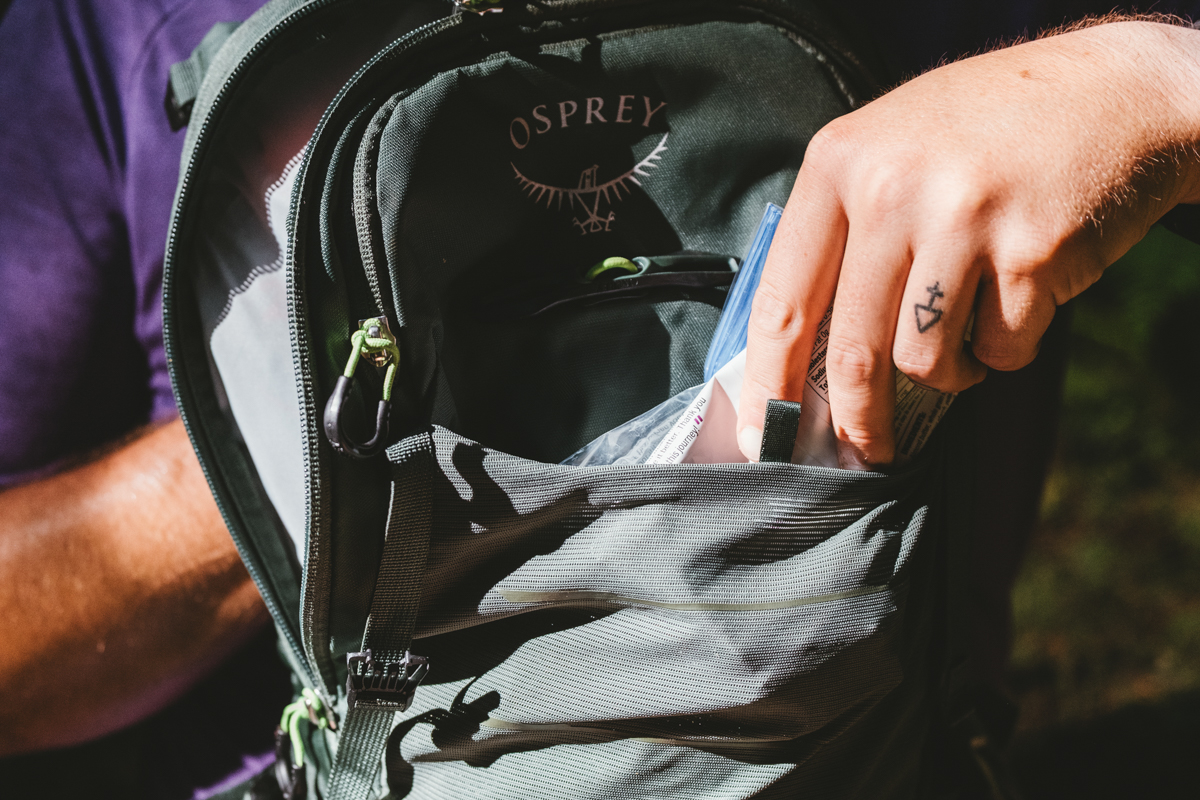
Lastly, it’s worth mentioning the LidLock bike helmet attachment. I didn’t find myself using this attachment much for two reasons: First, I usually wear my half-shell helmet on the way up the track as well as the way down. And secondly, the system can’t accommodate a full-face helmet. I can see this being a helpful addition for commuters who want a place to store their helmet while at a coffee shop, but it is lacking purpose on the single track. If a full-face helmet attachment is a must, the 14-liter version of the Raptor has a compression strap purpose-built for strapping one to the outside of the pack.
Hydration Bladder
The Raptor 10 comes with a 2.5-liter Hydraulics reservoir, which offers enough water volume for long days out on the trail. I found the reservoir easy to fill and use, and the hose clip attachment along the shoulder strap kept the hose in place even when riding winding downhill trails. That said, I don’t find myself using a hydration bladder often, as it makes it hard to monitor water levels throughout the day. The 2.5-liter capacity is also overkill for shorter day trips.
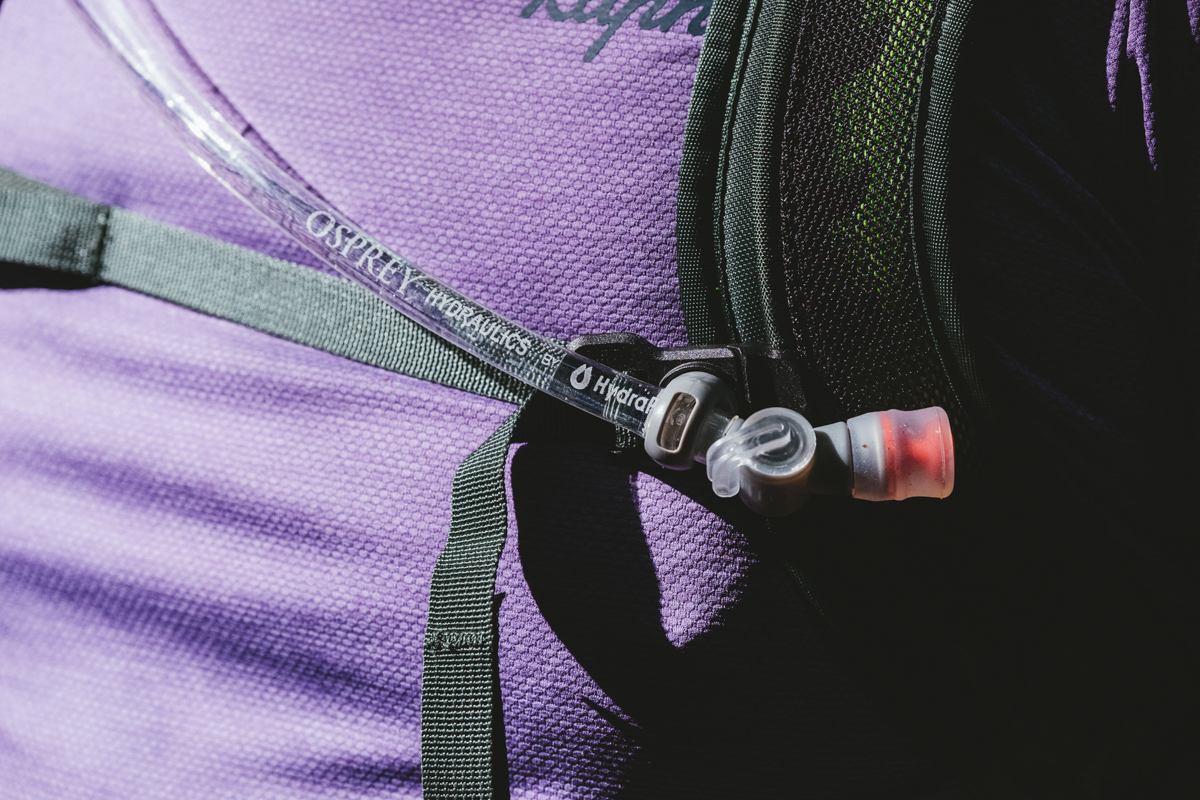
Tool Roll
The Raptor 10 also includes a tool roll that packs into an exterior bottom zipper pocket. I found this feature to be surprisingly handy. The organization is plentiful and intuitive, and I used it more than I thought I would. It’s also removable, which can be handy for non-biking activities such as hiking or skiing (or, in my case, sneakily using it in other bike packs I’m testing). For the price of the pack, I’m impressed that this feature comes included.
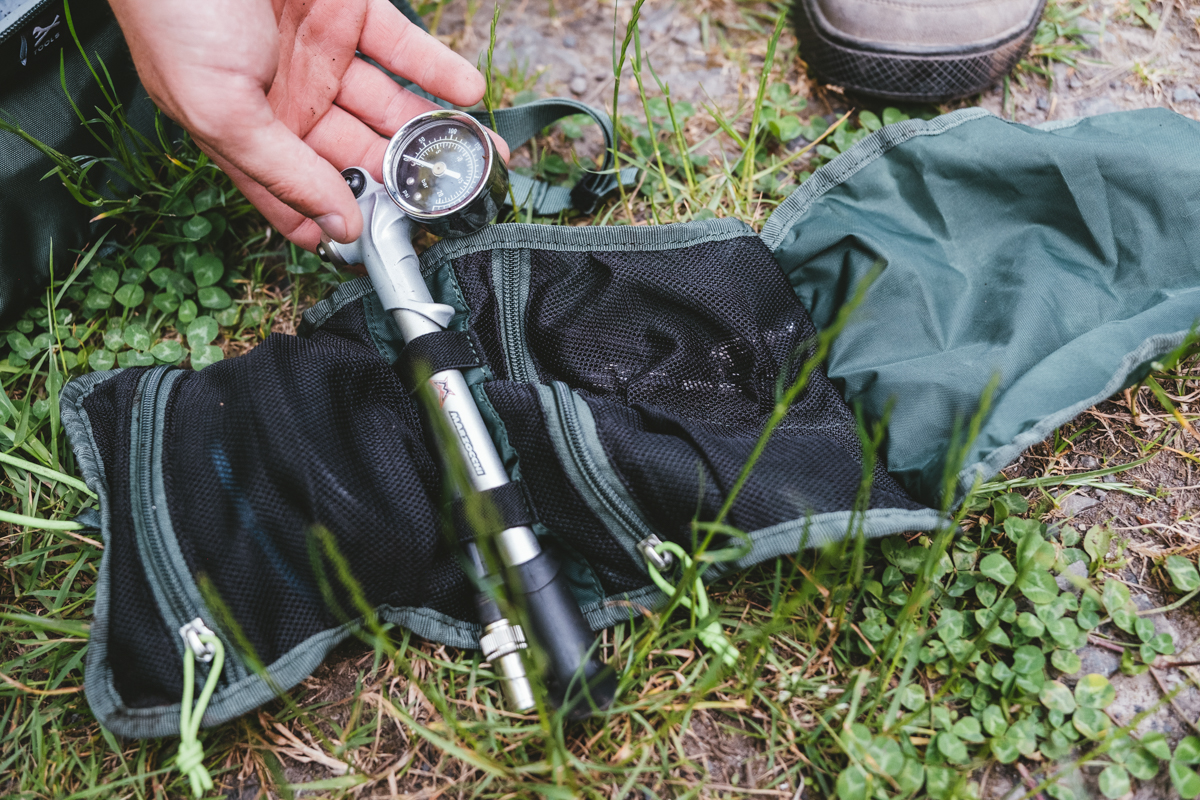
For the most part, I’ve come away impressed with Osprey’s build quality and attention to detail in the Raptor 10. The touch-points are high quality, and it’s obvious lots of thought went into the inclusion of features such as the fleece-lined sunglasses pockets, reflective graphics, the e-bike battery pocket in the tool roll, and the Velcro attachments on loose strap ends. That said, I do have some concerns with the long-term durability of this pack, particularly in the thin, stretchy material on the exterior. I’m skeptical that the stretchy drop pocket will maintain its elasticity over time, and the similar material on the hipbelt pockets is prone to snagging on overgrown trails. That said, the 210-denier (D) nylon fabric along the body of the pack (420D on the bottom) seems hard-wearing; it’s just the stretchy mesh fabric that concerns me. I haven’t experienced any significant issues to date, but I’ll be sure to update this guide if anything comes up in future testing.
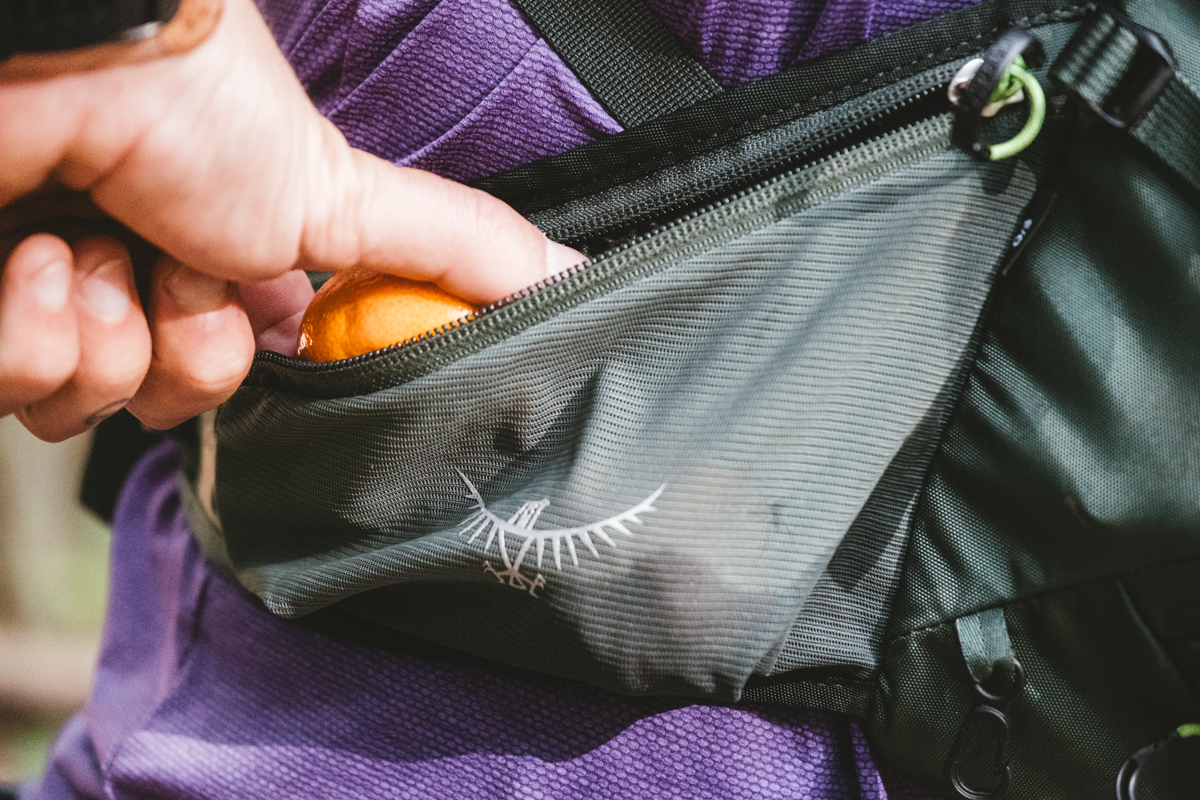
Osprey classifies the Raptor 10 as a pack for “all-day rides,” which makes sense for the capacity. Generally, I stick with smaller packs, running vests, or a hipbelt for anything shorter. That said, for a full day’s ride, the Raptor 10 hits a sweet spot: It’s big enough to store layers, hydration, snacks, and tools, but it doesn’t feel unwieldy when packed to its full capacity. And at 1 pound 11.8 ounces, the pack is neither overweight nor ultralight. For reference, Patagonia's larger 20-liter DirtRoamer weighs a bit less at 1 pound 8 ounces, but CamelBak's 14-liter M.U.L.E. Pro weighs more at 1 pound 14 ounces. Put together, the Raptor is light enough and large enough for full day rides.
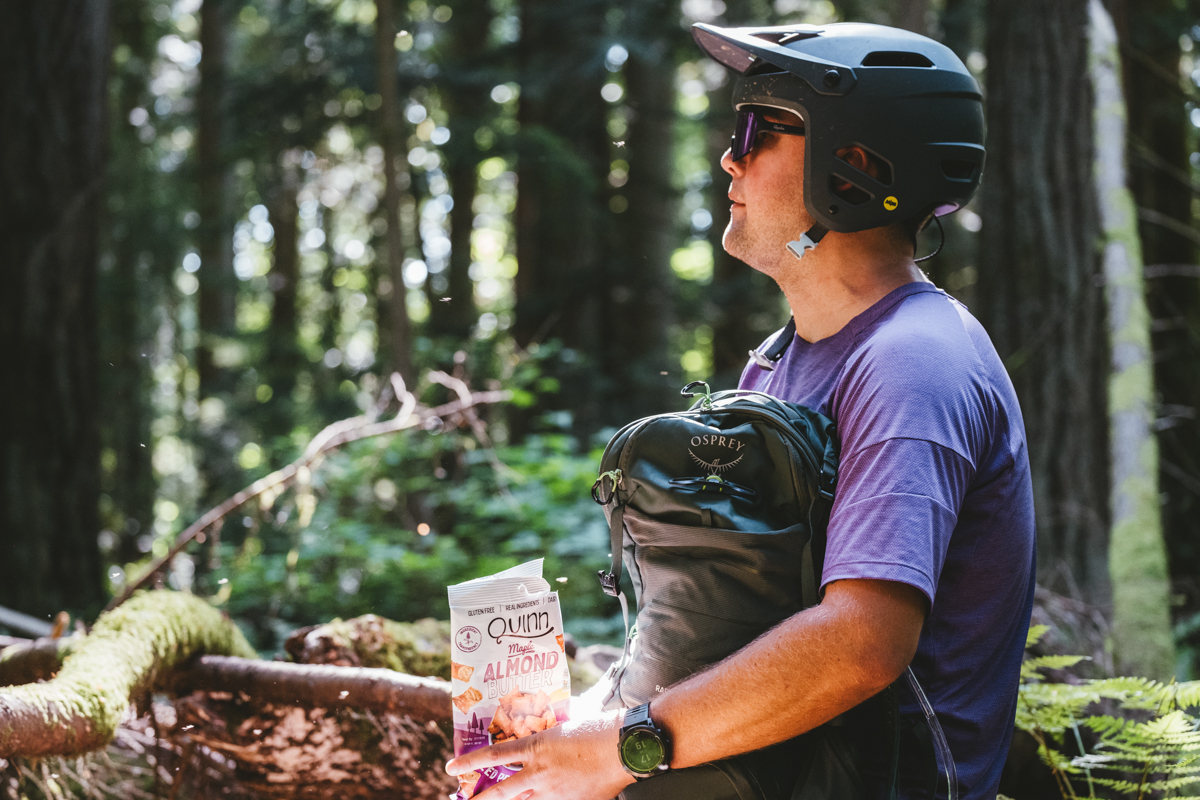
The Raptor 10 is listed as a “one size fits all” pack, and I found this to be true. It comfortably fit both myself (5’10”) and my taller friend (6’2”). For women, Osprey offers the Raven 10, which is essentially the same pack as the Raptor, but with hip straps that better conform to a general feminine body shape. But in most cases, I don’t doubt that the Raptor should be comfortable for most body types.
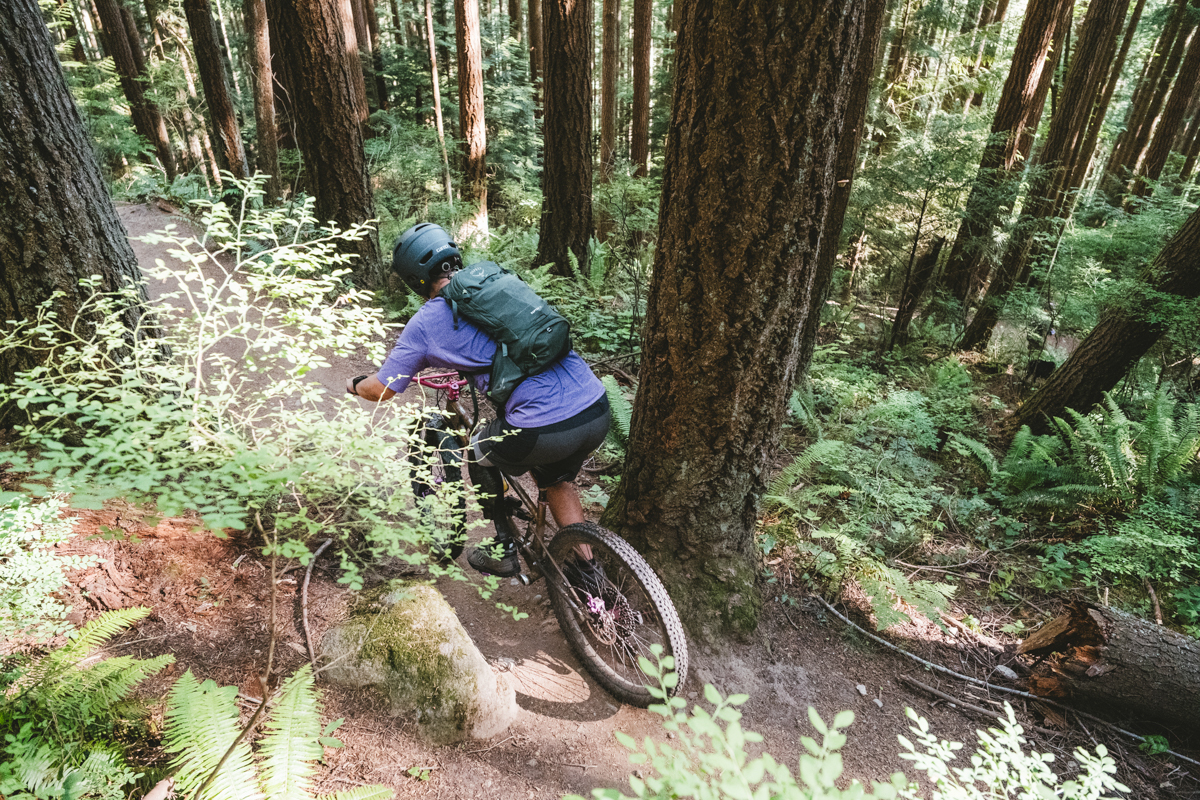
The latest version of the Raptor 10 includes a few key eco-friendly updates. Most notably, Osprey uses a PFAS-free DWR coating, which is free of any perfluorocarbons or "forever chemicals", which have been deemed harmful for the environment. The pack's fabric is also constructed with 100% recycled nylon, and the backpanel mesh is made up of 50% recycled EVA foam. Lastly, the Raptor 10 is bluesign approved, meaning it meets strict environmental and ethical manufacturing regulations set by the organization.

I tested the men’s Raptor 10, but, as mentioned previously, Osprey offers the women’s-specific Raven 10 as well. Aside from color options, the biggest difference between the Raptor and the Raven is the hipbelt design, which better suits a feminine build. Both the Raptor and Raven are available in larger 14-liter capacities, as well as 14-liter Extended Fits for larger riders. Rounding out the series are the Raven and Raptor 4-liter hipbelts (which come with a 1.5L reservoir), and Raven and Raptor Jr backpacks, which are made to fit children but feature many of the same features as the adult-sized versions.
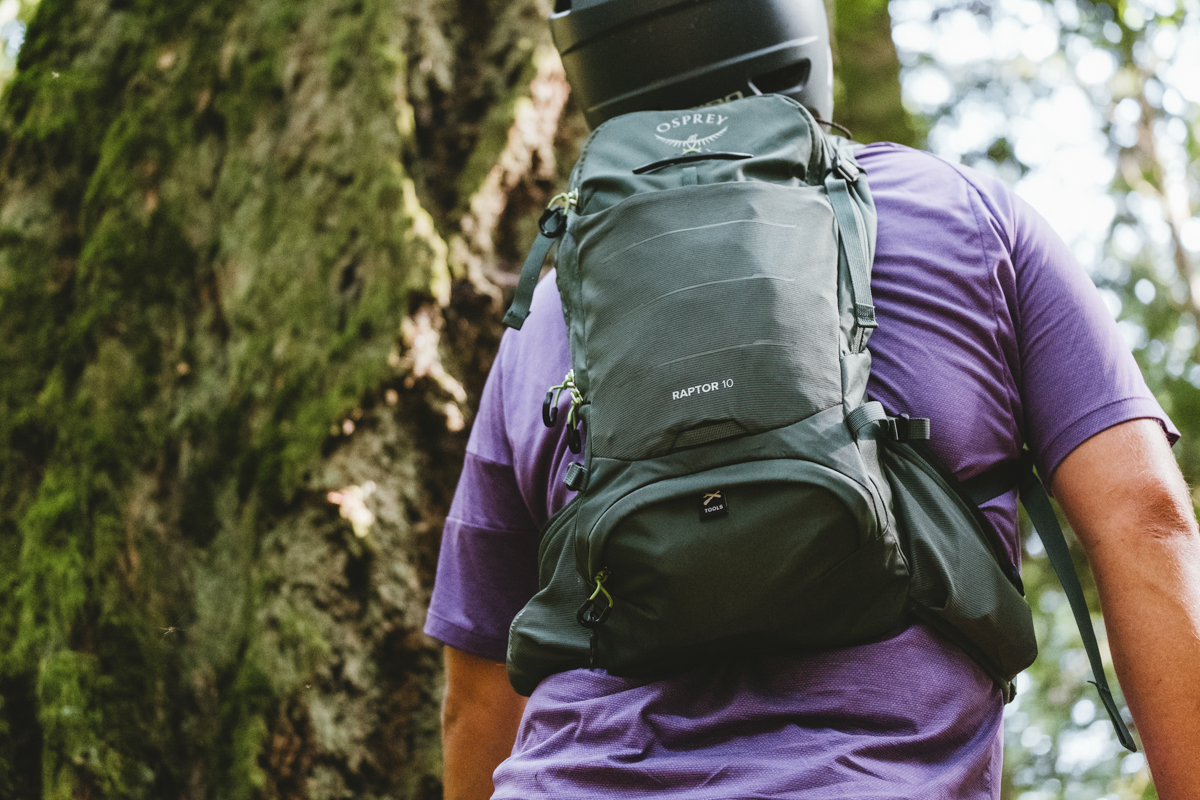
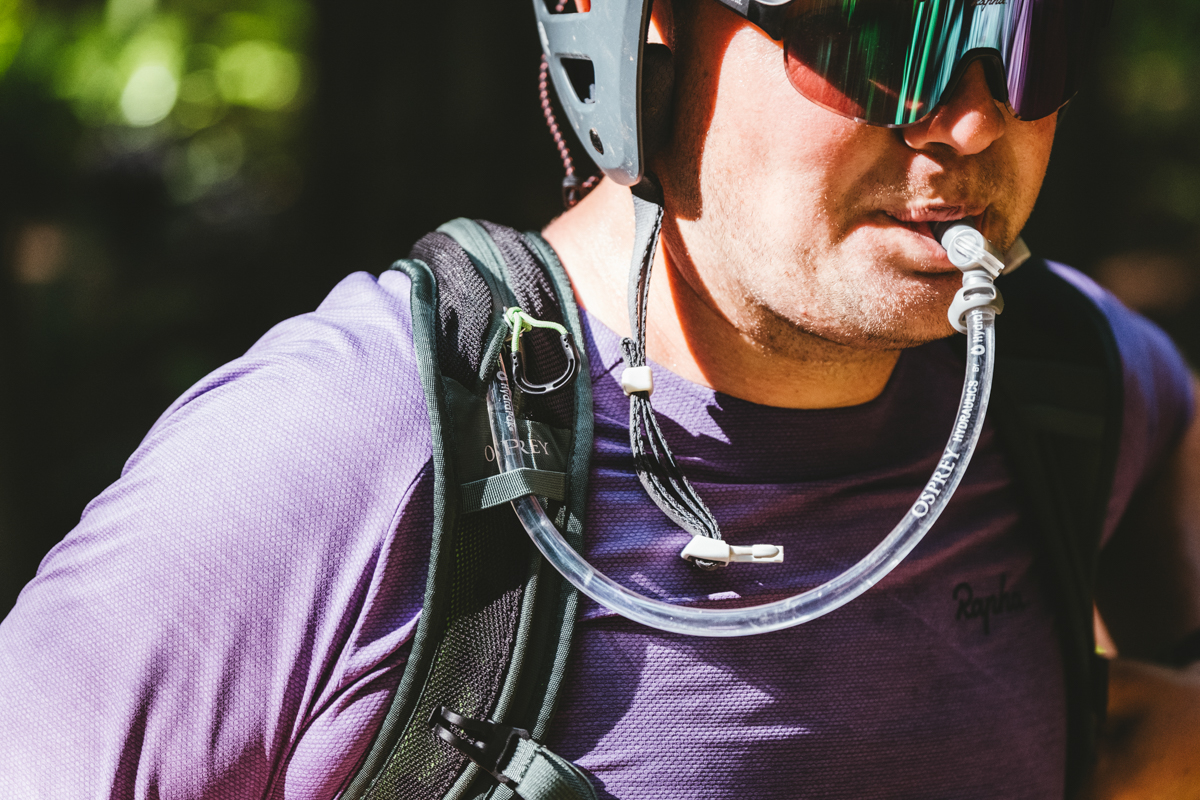
| Pack | Price | Volume | Reservoir | Weight | Helmet Carry | Capacities |
|---|---|---|---|---|---|---|
| Osprey Raptor 10 | $170 | 10L | Yes (2.5L) | 1 lb. 11.8 oz. | Yes | 10, 14L |
| Osprey Katari 7 | $90 | 7L | Yes (2.5L) | 1 lb. 3.8 oz. | No | 1.5, 3, 7L |
| Thule Vital 8L | $160 | 8L | Yes (2.5L) | 1 lb. 3.4 oz. | No | 3, 6, 8L |
| CamelBak Mule Pro | $176 | 14L | Yes (3L) | 1 lb. 14 oz. | Yes | 14L |
| Patagonia DirtRoamer 20L | $159 | 20L | Yes (2L) | 1 lb. 8 oz. | Yes | 20L |
The Raptor features a tough-to-beat combination of storage, carrying comfort, and bike-specific features, which is why it’s continually topped our mountain bike backpack list, but the market is flush with options. From within Osprey’s line, the Katari 7 stands out as a viable alternative for riders looking for something a bit smaller. This 7-liter pack is better suited for multi-hour rides, but still comes with a well-rounded featureset, including a 2.5-liter Hydraulics reservoir and stretchy mesh side pockets. But in our experience, the Katari doesn’t breathe or carry as well as the Raptor (it can be uncomfortable on the shoulders), which can be a dealbreaker for dedicated riders. Within this category, it’s worth checking out Thule’s Vital 8L, which we’ve found to be more thoughtfully designed than the Katari. For instance, it includes a padded hipbelt (the Katari’s is just webbing), an exterior dump pocket, and an easy-to-use magnetic hose attachment. It’s quite a bit pricier than the Katari, but still cheaper than the Raptor 10, which makes it a viable alternative for those wanting a bit less pack without sacrificing comfort.
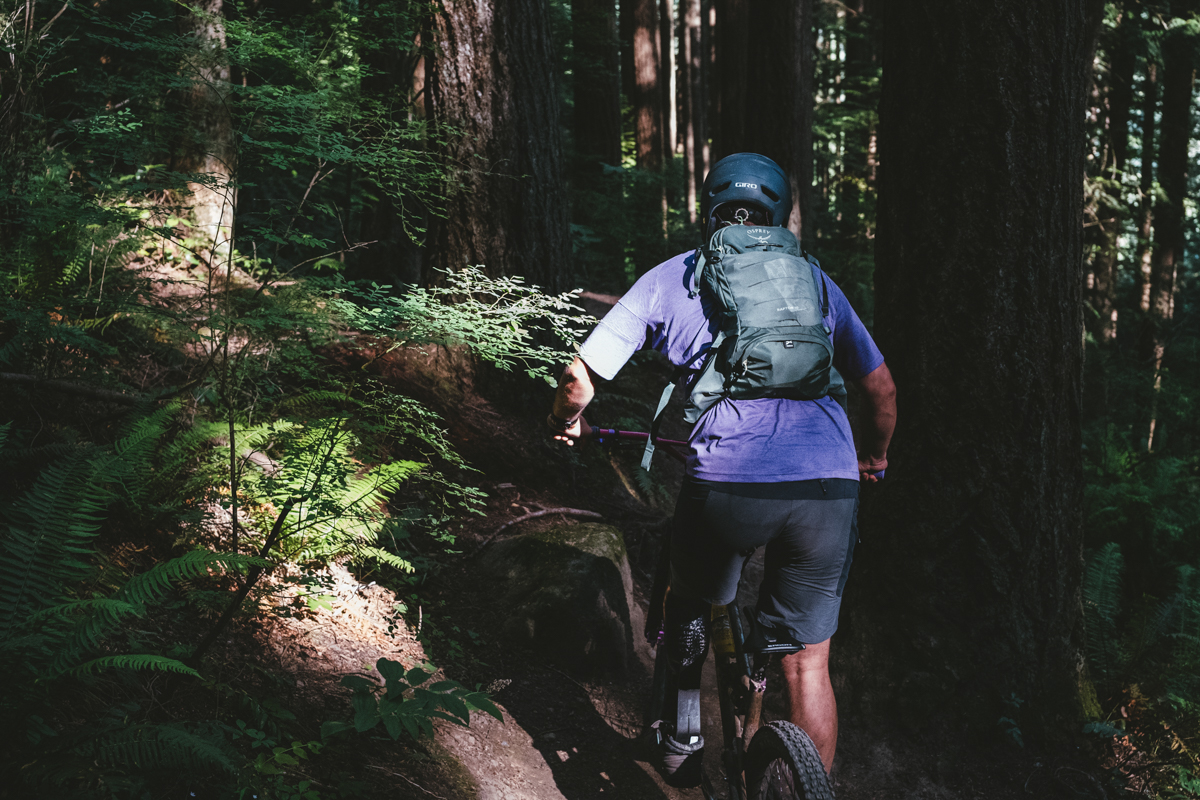
On the other hand, CamelBak’s Mule Pro and Patagonia’s DirtRoamer are nice options for those on the hunt for a bigger pack. The Mule Pro features 4 more liters of carrying capacity, a larger 3-liter bladder, and a very breathable open weave mesh backpanel for less than the Raptor 10. That said, the Mule Pro lacks the refinement of the Raptor, especially in terms of comfort and small touch points (the magnetic hose attachment, for instance, easily pops off while riding). Patagonia’s DirtRoamer 20L offers double the capacity of the Raptor at a lower cost. Not only that, but the streamlined design boasts thoughtful organization, and the padded waistbelt allows for a comfortable carry even at full capacity. However, a larger pack will inherently be more unwieldy, especially on jumps and drops, and we rarely find ourselves reaching for a pack of this size for day trips. Plus, the DirtRoamer’s backpanel severely suffers in terms of breathability when compared to the Raptor’s Airscape. At the end of the day, we still find ourselves reaching for the Raptor in most cases.
Back to the Osprey Raptor 10 Review See Our Mountain Bike Backpack Guide